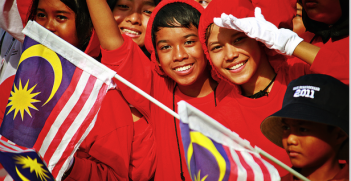Australia and the Protection of Human Rights

Australia has adopted a Janus-faced approach to the protection of human rights. One face looks to the international sphere and champions human rights principles. The other face looks internally, resisting the application of these principles domestically.
The international human rights system provides a range of mechanisms to monitor the implementation by states of their treaty obligations. How have these mechanisms assessed Australia’s human rights record?
Australia’s periodic reports to human rights treaty bodies have prompted a consistent catalogue of concerns in the treaty bodies’ concluding observations. These include the disadvantaged situation of Australia’s Indigenous peoples, the treatment of asylum seekers, the reach of counter-terrorism legislation, excessive use of force by police, the rights of prisoners, and high rates of homelessness. The reporting mechanism has not, however, proved a strong form of regulation of Australia’s human rights performance. On one occasion, indeed, it led to a rupture in Australia’s relationship with the international human rights system.
Racial discrimination
In 2000, the concluding observations to the UN’s Committee on the Elimination of Racial Discrimination report on Australia lauded many legislative and policy measures designed to reduce the incidence of racial discrimination in Australia; but they also expressed concern about a range of forms of discrimination against Aboriginal and Torres Strait Islander peoples. The Commonwealth government rejected the committee’s views, calling them “an unbalanced and wide-ranging attack that intrudes unreasonably into Australia’s domestic affairs“.
As a result of this incident, the government decided to reduce its engagement with the human rights treaty bodies. While there has since been some rapprochement between Australia and the UN treaty bodies, their concluding observations have had little impact on Australian policy and law.
Unlike the system of periodic reports, which applies to all treaty parties, states have an option to accept the possibility of the treaty bodies considering complaints from individuals alleging that the state has breached the terms of the treaty, if all local remedies have been exhausted.
Legislative change
This has led to a number of international decisions on Australia’s human rights record. The first, and perhaps best known, was that of the UN Human Rights Committee in 1992 declaring Tasmanian laws that criminalised male homosexuality to be inconsistent with human rights. The Commonwealth government then legislated to override the relevant provision of the Criminal Code Act 1924 (Tas).
This first case is, so far, the high-water mark of Australia’s engagement with the views of the UN treaty bodies. As at March 2016, the UN Human Rights Committee had considered 75 claims concerning Australia, 31 of which were upheld by the committee. Australia’s violations of human rights have been found to include the mistreatment of children in immigration detention, the inhumane treatment of prisoners, the denial of the right to family life, and undue trial delay.
A standard Australian response to the views of the human rights treaty bodies is to note first that the committees are not courts and that their views are non-binding, and to then simply reject the relevant committee’s views on the application of the law. Sometimes Australia will explicitly invoke its sovereignty as a reason to reject the committee findings. This combative approach is at odds with Australia’s formal recognition of the competence of the treaty bodies.
Australia’s stance towards other forms of international human rights scrutiny is mixed. In 2009, it signed the Optional Protocol to the Convention against Torture, which would allow inspection of places of detention by the UN Subcommittee on the Prevention of Torture, but has not yet ratified it.
In 2008, Australia issued a standing invitation to the thematic Special Procedures of the UN Human Rights Council. Several special rapporteurs have visited Australia and made extensive reports on gaps in human rights protection. In the case of a planned visit by the special rapporteur for migration in 2015, the Australian government refused to facilitate access to the asylum seeker detention centres on Nauru and Manus Island and would not guarantee that individuals who would provide information about the centres to the special rapporteur would be protected from prosecution. In light of this stance, the Special Rapporteur, François Crépeau, cancelled his visit.
Future prospects
It may be that human rights will be more fully implemented at the state and territory level rather than the federal level over the next decade. Indeed, the Queensland government established a parliamentary inquiry into a bill of rights in 2015.
A challenge for the protection of human rights in Australia is the expansion of executive discretion and the diminution of judicial independence. Over recent years, successive Australian parliaments have granted the executive branch wide discretionary powers that encroach upon fundamental rights and freedoms. Among these are administrative powers to detain indefinitely various classes of persons, including refugees and asylums seekers, those who have received adverse security assessments, and those with cognitive disabilities or who are found unfit to plead. (Indigenous Australians are overrepresented in the two latter groups.)
Counter-terrorism laws have been extended to permit administrative detention without trial or supervision by an independent judicial body. Control orders, for example, restrict liberty in the absence of a criminal conviction or charge. New secrecy laws impose prison sentences for the disclosure of certain information relating to intelligence operations.
Such laws have a direct impact on freedom of expression, especially for human rights defenders and journalists. Viewed together, these examples suggest an overreach of power within the executive branch of government, a declining willingness of parliaments to defend core freedoms, and the exclusion of judges from interpreting laws according to common law principles or the presumption that parliament intends to comply with international law.
A more positive indication of Australia’s future commitment to human rights has been the decision to seek election to the UN Human Rights Council (UNHRC) for the period 2018–20. Australia has announced a “principled and pragmatic approach” to human rights based on five pillars: gender equality, good governance, freedom of expression, the rights of Indigenous peoples, and a strong national human rights institution.
While Australia’s campaign to join the UNHRC has an international focus, particularly on improving human rights in the Indo-Pacific region, the bid will inevitably attract scrutiny of Australia’s own human rights record. Were Australia to be elected to the council, it may provide an impetus to improve Australia’s engagement with the international human rights regime and to translate its treaty obligations into enforceable national laws.
Professor Hilary Charlesworth is a Melbourne Laureate Professor at Melbourne Law School and a Distinguished Professor at the Australian National University.
Emeritus Professor Gillian Triggs is president of the Australian Human Rights Commission.
This is an abridged version of Charlesworth and Triggs’, ‘Australia and the International Protection of Human Rights’, in International Law in Australia 3rd Edition, (Thomson Reuters, 2016). International Law in Australia, 3rd Edition, edited by Don Rothwell and Emily Crawford, is a publication of the Australian Institute of International Affairs.




